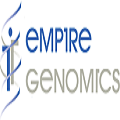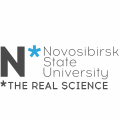Day 1 :
Keynote Forum
Sean X Hu
Global Data, USA
Keynote: Precision/Personalized Medicine: Encouraging Trend, but Major Challenges Ahead?
Time : 11:40-12:20

Biography:
Hu is currently Senior Vice President and Head of Consulting in the US for the Pharmaceutical and Diagnostics industries at GlobalData Inc., a publicly listed global healthcare business intelligence and management consulting firm with a headquarter in London, UK. Earlier, aside from being the founding President of BioStrat Advisory LLC, for years he was the Managing Partner and Head of Bionest USA, both life science industry strategy consulting firms in the US. An early participant of the Human Genome Project and later involved in the International HapMap Project, Dr. Hu is now a recognized thought leader in the field of personalized / precision medicine (PM) business strategy, advising global pharmaceutical and diagnostics companies on how best to develop and commercialize personalized medicine drug and / or molecular diagnostics, and build internal business processes & capabilities for PM products. He currently serves on the Editorial Board of the peer-reviewed journal Personalized Medicine, in addition to several PM related industry consortia/committees. For example, he was the only representative from the management consulting industry invited to the US FDA Personalized Medicine Initiative, and co-organized / co-chaired a two-day conference / workshop on Personalized Medicine Strategic Decision Making onsite at the US FDA campus. He was also a Member of the BioNJ PM & Molecular Diagnostics Committee. He has been a frequently invited speaker on PM at conferences and to the leadership teams of many pharmaceutical companies, along with some notable business publications on this subject, including two (co) first authored papers in Nature Reviews, and such other journals as Supplement to Science and Personalized Medicine. As part of his extracurricular activities, he holds an Adjunct Professor position at the Chinese National Human Genome Center at Shanghai, Chinese Academy of Sciences, and Senior Advisor & Visiting Professor positions at the Beijing Genomics Institute.
Abstract:
Today we are nearly 20 years after the launch of the first poster-child personalized medicine, Herceptin, and more than 13 years after the completion of the Human Genome Project. Driven by both the advancement of biotechnologies and the attraction of the great potential value of personalized / precision medicine, in recent years we have seen solid growth in the number of personalized medicine products. About ten years ago, we predicted that, drastic reduction of costs of emerging genomic technologies was ready to shift the bottleneck of the personalized medicine field from science-centric to business-centric, i.e. from whether or not it would be scientifically and clinically feasible to discover and develop a biomarker / companion diagnostics, to whether or not a pharma / biotech company would be willing to pursue a biomarker for its product and embrace the idea of patient stratification. That prediction was proven true, as, in the past decade, more and more pharma / biotech companies considered biomarker an integral component of their product development and commercialization strategy and delivered a steadily growing personalized medicine pipeline and marketed products.
In parallel, regulatory pathways for personalized medicine have been evolving and maturing. Reimbursement challenges for personalized medicine have also been addressed in key markets in the world. Given those observations, are we now in a “golden age” of personalized medicine? Or, there are other, new major challenges ahead of us? Do many drug development teams still often struggle with a biomarker approach for their drugs? In the high profile example of PD-1/PD L1 immuno oncology products, sharing a similar mechanism of action didn’t result in immuneoncology products with similar biomarkers, or at all. What would those real life examples tell us about the future challenges of personalized / precision medicine? In this presentation, we will review the history and landscape of personalized/precision medicine, and share our views on how the challenges in the field are evolving for the life science industries, and potential solutions.
- Track 1: Molecular Diagnostics in Personalized Medicine Track 2: Biomarkers in Personalized Medicine Track 3: Pharmacogenetics in Personalized Medicine Track 4: Pharmacogenomics in Peronalized Medicine Track 5: Pharmacoproteomics in Personalized Medicine Track 6: Metabolomics Personalized Medicine Track 7: Personalized in Healthcare Track8:Personalized Biological Therapies
Session Introduction
Sean X Hu
Global Data, USA
Title: Precision/Personalized Medicine: Encouraging Trend, but Major Challenges Ahead?

Biography:
Hu is currently Senior Vice President and Head of Consulting in the US for the Pharmaceutical and Diagnostics industries at GlobalData Inc., a publicly listed global healthcare business intelligence and management consulting firm with a headquarter in London, UK. Earlier, aside from being the founding President of BioStrat Advisory LLC, for years he was the Managing Partner and Head of Bionest USA, both life science industry strategy consulting firms in the US. An early participant of the Human Genome Project and later involved in the International HapMap Project, Dr. Hu is now a recognized thought leader in the field of personalized / precision medicine (PM) business strategy, advising global pharmaceutical and diagnostics companies on how best to develop and commercialize personalized medicine drug and / or molecular diagnostics, and build internal business processes & capabilities for PM products. He currently serves on the Editorial Board of the peer-reviewed journal Personalized Medicine, in addition to several PM related industry consortia/committees. For example, he was the only representative from the management consulting industry invited to the US FDA Personalized Medicine Initiative, and co-organized / co-chaired a two-day conference / workshop on Personalized Medicine Strategic Decision Making onsite at the US FDA campus. He was also a Member of the BioNJ PM & Molecular Diagnostics Committee. He has been a frequently invited speaker on PM at conferences and to the leadership teams of many pharmaceutical companies, along with some notable business publications on this subject, including two (co) first authored papers in Nature Reviews, and such other journals as Supplement to Science and Personalized Medicine. As part of his extracurricular activities, he holds an Adjunct Professor position at the Chinese National Human Genome Center at Shanghai, Chinese Academy of Sciences, and Senior Advisor & Visiting Professor positions at the Beijing Genomics Institute.
Abstract:
Today we are nearly 20 years after the launch of the first poster-child personalized medicine, Herceptin, and more than 13 years after the completion of the Human Genome Project. Driven by both the advancement of biotechnologies and the attraction of the great potential value of personalized / precision medicine, in recent years we have seen solid growth in the number of personalized medicine products. About ten years ago, we predicted that, drastic reduction of costs of emerging genomic technologies was ready to shift the bottleneck of the personalized medicine field from science-centric to business-centric, i.e. from whether or not it would be scientifically and clinically feasible to discover and develop a biomarker / companion diagnostics, to whether or not a pharma / biotech company would be willing to pursue a biomarker for its product and embrace the idea of patient stratification. That prediction was proven true, as, in the past decade, more and more pharma / biotech companies considered biomarker an integral component of their product development and commercialization strategy and delivered a steadily growing personalized medicine pipeline and marketed products.
In parallel, regulatory pathways for personalized medicine have been evolving and maturing. Reimbursement challenges for personalized medicine have also been addressed in key markets in the world. Given those observations, are we now in a “golden age” of personalized medicine? Or, there are other, new major challenges ahead of us? Do many drug development teams still often struggle with a biomarker approach for their drugs? In the high profile example of PD-1/PD L1 immuno oncology products, sharing a similar mechanism of action didn’t result in immuneoncology products with similar biomarkers, or at all. What would those real life examples tell us about the future challenges of personalized / precision medicine? In this presentation, we will review the history and landscape of personalized/precision medicine, and share our views on how the challenges in the field are evolving for the life science industries, and potential solutions.
Howard R. Moskowitz
Mind Genomics Advisors, LLC, Saratoga Springs, NY
Title: Mind Genomics, Messaging, and Engineering More Acceptable & Effective Experience in Medicine by Understanding the ‘Mind’ of the Client / Patient

Biography:
Howard Moskowitz, Harvard PhD in experimental psychology (1969) is founding partner and chief scientific officer of Mind Genomics Advisors. He has published extensively in many fields, using the science of Mind Genomics, which he invented more than 30 years ago. After a distinguished dual career in science and business, he changed course, creating an institute to help younger professionals as well as students and business, benefit from the application of Mind Genomics to practical problems in society, including commerce, health, education, and socal issues. Along with hundreds of scientific papers, he has written/edited 27 published books, with an additional 15 books finished but not yet published.
Abstract:
"Mind Genomics, a new science with old roots, reveals what aspects of the topic are important to people, how people differ in the way they respond to these aspects (mind-sets), messages most effective to drive choice and compliance for each mind-set, and finally how to identify the mind-set of a person on a topic, either through personal interaction (the personal viewpoint identifier), or through scored databases (the digital viewpoint identifier). Mind Genomics is a data-driven approach to understand the world of the everyday. A metaphor is ‘cartography of the mind.’ Knowledge is developed in a pointillist style, from the intimate, profound, comprehensive understanding of specific topics, be these situations (e.g., choosing hospital food), regimens (e.g., adhering to the proper schedule for taking one’s drugs), choosing a service, products (e.g., a selecting a hospital in which to give birth), dealing with the ‘customer/patient’ with understanding (e.g., interacting with a teen age patient), etc.. We present the Mind Genomics approach, first in theory, and then in practical applications, showing how messaging can drive potential increases in adherence after discharge from the hospital, as well as better messaging to encourage colonoscopy, and finally messaging to convince the public that one’s hospital is a better place in which to ‘give birth. "
Vincent S.Gallicchio
Clemson University USA
Title: Personalized medicine-the future of clinical practiceâ€will it lead to better patient care?

Biography:
Vincent S. Gallicchio has 42 years experience in academic medicine and research covering experimental hematology, immunology, and developmental therapeutics for human diseases such as AIDS and cancer. He has earned national and international respect and recognition for his efforts. In a first time study reporting on academic scholarly productivity in the Journal of Clinical Laboratory Science, Gallicchio was rated the number one academic biomedical laboratory science researcher in the United States. In addition to his passion for research, Gallicchio is equally passionate to teach, mentor and advise students. He has mentored many doctoral and post-doctoral students, dozens of master’s level students and hundreds of undergraduate students both foreign and domestic, many of whom are now esteemed researchers themselves at institutions such as: Oxford University, Eastern Kentucky University, University of Cincinnati, University of Florida, University of Kentucky, University of Limpopo (South Africa), Jewish and Mercy Hospitals in Cincinnati and major pharmaceutical companies such as Procter & Gamble and Johnson & Johnson. As a board certified medical laboratory scientist by the American Society of Clinical Pathology (ASCP), Gallicchio also serves as the Clinical Laboratory Director of the Lab Tree Clinical Biochemical Research Laboratory in Greenville, SC. He also serves as a consultant to Minerals Resources International, Inc on matters related to the health benefits of trace elements; and is a consulting Vice-President of Technology Development for Conversion Laboratories, LLC, and West Columbia, SC. He has served on the faculty and academic staff at the Yale University School of Medicine, the University of Kentucky Medical Center, the University of Central Lancashire (England) and the University of Wolver hampton (England). He has served as President of Alpha Eta Honor Society, the International Society for Lithium Research, International Federation of Biomedical Laboratory Science and currently serves as Vice President of the Educational and Research Centers in Trace Elements program operated under the auspice of UNESCO
Abstract:
"Personalized medicine (PM) is a model that proposes the customization of healthcare -†with medical decisions, practices, and/or products being tailored to the individual patient. Use of genomic information plays a major role in certain aspects of PM. The term was first coined in the context of genetics (though it has since broadened to encompass all sorts of personalization measures). To distinguish from the context in which medicine has always been inherently ""personal"" to each patient, PM commonly denotes the use of technology or discovery enabling a level of personalization not previously feasible or practical. Advances in medical and human genetics have enabled a more detailed understanding of the impact of genetics in diagnosis, treatment and prognosis of human disease. Large collaborative research projects such as the human genome project have laid the groundwork for the understanding the role of genes in normal human development including physiology revealing single nucleotide polymorphisms (SNPs) account for the genetic variability between individuals. This information has made possible the use of genome association studies (GWAS) to examine genetic variation and thus understand the risk for many common diseases. A number of topics have emerged that have targeted personalized medicine they are: pharmacogenomics, proteomics and metabolomics. For example, the management of cancer identified the presence of genes associated with the induction of a number of human cancers. This list has grown in significance amplified recently with the actions made in personal health by the actress Angelina Jolie. PM also has identified a number of notable concerns and opportunities. One such concern is the individual cost of PM for those individuals who do not have personalized health care insurance. Legislation in the form of the Genomics and Personalized Medicine Act has been introduced in the Congress of the United States to address issues involving scientific barriers, adverse market pressures and regulatory obstacles. Importantly, the passing of the Affordable Care Act and its affirmation by the Supreme Court of the United States will allow the utility of PM to continue in the U.S. Finally, in order to educate future physicians the advent of PM is influencing medical education with the development of sub-â€specialties in PM by a growing number of medical schools in the United States. The transition to PM is proceeding even as experts continue to debate whether does this new information actually improve health care? This dialogue will continue here at Personalized Medicine 2015 Valencia."
Bahram G Kermani
Crystal Genetics Inc.,USA
Title: Achieving clinical grade genetic testing based on whole genome sequencing

Biography:
Bahram G Kermani is the Founder and CEO of Crystal Genetics, Inc. He was the Vice President of Bioinformatics, Software Engineering and IT at Guardant Health and served as the Senior Director of Computational Biology at Complete Genomics. He is an expert in the field of computational biology and pattern recognition. He has held various scientific positions at Illumina, where he designed and implemented algorithms for various proteomics and genomics applications, including Illumina's world renowned SNP genotyping system. He was a Lead Digital Designer at Lucent Technologies (AT&T Bell Laboratories), where he designed and analyzed various digital signal processors. He has completed his Postdoctoral fellowship at Duke University Medical Center in 1996, PhD and MS in Electrical Engineering and Biomedical Engineering in 1996 and 1992, respectively from North Carolina State University, Raleigh, NC. He has received his BS (1989) in Electronics Engineering from Amirkabir University of Technology (Tehran Polytechnique), Tehran, Iran. He has several publications in the areas of electrical engineering, biomedical engineering and genomics and holds 42 patents, issued in the United States, Canada, France, United Kingdom, Germany and Japan.
Abstract:
Genetic tests are gateways to understanding the predisposition state for different genetic diseases. Although not everybody is affected by genetic anomalies, in theory, a person's susceptibility status to a disease remains unknown unless a genetic test is performed. Therefore, every person in the world can benefit from these tests and at multiple times during his/her lifetime. The susceptibility conditions are often hereditary but may also be due to de novo mutations in the patient. For many people with pathogenic mutations, effective preventative actions are available. These actions include medications, surgical interventions and lifestyle changes. For a test to be useful, it must be accurate, comprehensive, affordable and flexible. The most comprehensive and flexible genetic test is the one based on whole genome sequencing (WGS), where almost all positions of the genome can be interrogated. A fundamental issue with WGS data is the limited coverage (e.g., 30x) which could cause challenges in many areas of the genome where the biases in the process force the coverage to be significantly lower than the average. When the read coverage drops, one has no choice but using all the relevant information in the given reads to make a call, otherwise a false negative call may be made. Subsequently, for that call not to be erroneous (FP), in addition to the sample’s read information, some domain knowledge based on historic data or auxiliary information may be utilized. Therefore, machine learning and expert systems can be highly desirable models in order to achieve this objective. Variant interpretation is a common challenge in all genetic tests. WGS framework provides the most flexible model for dealing with an ever-changing landscape of the interpretation engines and databases. When WGS data is available, one can, in theory, update the test results based on the most recent data in interpretation engines and databases.
David Duggan
Translational Genomics Research Institute, USA
Title: Unlocking the Potential of Precision Genomic Medicine: Examples from Oncology

Biography:
Abstract:
Oscar Teijido
Camilo José Cela University, Spain
Title: Risk polymorphisms associated with lipid metabolism and vascular risk in the Spanish population

Biography:
Oscar Teijido Hermida is the head of the Medical Epigenetics Department at EuroEspes Biomedical Research Center, Institute of Medical Science and Genomic Medicine, Corunna, Spain. He received his PhD in the University of Barcelona, Spain in 2007 with his Thesis titled: Biochemical characterization and location of the protein MLC1, involved in the Megalencephalic Leukoencephalopathy with Subcortical Cysts. During his scientific career in University of A Corunna (Spain), University of Barcelona (Spain), New York University (USA), and The National Institutes of Health (USA), Dr. Teijido achieved more than 20 scientific publications in the molecular genetics, biochemistry, and physiology fields and presented his work in more than 25 International Conferences and invited presentations.
Abstract:
and stroke are the third leading cause of death in the US and in Europe with around 200 cases per 100,000 inhabitants per year and almost six million victims every year, according to the WHO. Furthermore, Metabolic Syndrome (MS) affects 20-34% of the population, primarily in developed countries. MS is characterized by low high-density lipoprotein (HDL) levels, high blood serum triglycerides, high blood pressure, abdominal obesity, and elevated fasting plasma glucose, which confers a higher risk for thrombosis and diabetes than average population. Population studies evaluate the genetic risk, i.e. the probability of an individual carrying a specific disease-associated polymorphism. Identification of risk polymorphisms is essential for an accurate diagnosis or prognosis of a number of pathologies. The aim of this study was to characterize the influence of risk polymorphisms associated with lipid metabolism, hypertension, and thrombosis in a large population of Spanish individuals affected by a variety of brain and vascular disorders as well as metabolic syndrome. We performed a cross-sectional study in 4415 individuals from a widespread regional distribution in Spain (48.15% males and 51.85% females), with cerebrovascular, abolic, and mental disorders. We evaluated polymorphisms in a number of genes involved in obesity, cerebrovascular, and cardiovascular risk in our population and compared it with representative Spanish and European populations. We identified polymorphisms in ACE, AGT(235), IL6(573) as representative risk factors for vascular and lipid metabolism-related disorders in our population in comparison to reference data of Spanish and European individuals. Predominance of APOE-ε4 and reduced APOE-ε2 allele distribution compared to other representative Spanish and South European populations might be associated with Alzheimer’s disease or dementia-related disorders rather than vascular or lipid metabolism imbalance in our population.
Anthony Johnson
Empire Genomics LLC, USA
Title: Developing a companion Dx in oncology: From academic research project to companion trial

Biography:
Anthony Johnson is the President and CEO of Empire Genomics, a leading molecular diagnostic firm specializing in the delivery of precision medicine in the oncology arena. Since the firm’s founding, he has raised multiple rounds of funds, signed multimillion dollar licensing and distribution deals and has developed many companion diagnostic assays that are in clinical development as therapeutic selection markers. He is also a Founding Partner of Buffalo Biosciences, a life science strategic management services firm, where he consults on areas of healthcare. Previously, he has worked for Invitrogen Corporation, where he created and led the firm’s stem cell and regenerative medicine franchise. He has earned his MBA from the Alliance Manchester Business School in Manchester, England and a Bachelor's degree in Biology from Fisk University in Nashville, Tennessee. He is a Fellow of the second class of the Health Innovators Fellowship and a Member of the Aspen Global Leadership Network.
Abstract:
This talk will explore the complexities and timelines of licensing a novel genomic technology from Emory University and developing the assay into a companion Dx with a major pharmaceutical partner (Takeda Millennium). We will discuss the process, the key stakeholders as well as key issues that need to be considered and managed in order to ultimately end up with a marketable test in the end. The talk will center on the Empire Genomic Companion Dx assay for proteasome inhibitors in the disease multiple myeloma and the active companion trial NCT02765854. In order to proceed from the bench to the bedside, diagnostic technologies must demonstrate robust scientific data, health economic benefits and the ability to ultimately help clinicians make disease management decisions based on testing results.
Ramón Cacabelos
Camilo José Cela University, Madrid, Spain.
Title: Pharmacogenetics of cerebrovascular and cardiovascular risk factors in dementia

Biography:
Dr. Ramón Cacabelos is Professor and Chairman of Genomic Medicine at Camilo José Cela University, Madrid, and President of the EuroEspes Biomedical Research Center, Institute of Medical Science and Genomic Medicine, Corunna, Spain. He received his M.D. from Oviedo University, Ph.D. from Santiago de Compostela University, and D.M.Sci. (Psychiatry) from Osaka University Medical School, Japan. After a decade at the Department of Psychiatry in Osaka, he returned to Spain and focused his research activity on the genomics and pharmacogenomics of Alzheimer’s disease, neurodegenerative disorders, and neuropsychiatric pathology. He has published over 600 papers, 400 chapters, and 24 books. One of his major contributions is the first World Guide for Drug Use and Pharmacogenomics (2012)(www.pharmacogenomicsguide.com). He is Editor-in-Chief and member of the Editorial Board of several international journals, member of over 30 scientific societies, and President of the Spanish Society of Genomic Medicine and the World Association of Genomic Medicine.
Abstract:
"Alzheimer’s disease (AD) is a heterogeneous disorder with, at least, a tetravalent phenotype (neuropathological, neurobehavioral, age-related and gender-related components). Consequently, therapeutic intervention in dementia is polymodal, in order to modify the expression of all these complex phenotypes. AD patients present concomitant disorders including hypertension (20-30%), obesity (>20%), diabetes (24%), dyslipidemia (>40%), and metabolic disorders (>15%). Cardiovascular disorders (>40%), atherosclerosis (>60%), and different modalities of cerebrovascular damage (>60%) are frequent among patients with AD. Most of these concomitant anomalies may contribute to accelerate the dementia process. Pharmacogenetic studies in hypercholesterolemic patients with dementia treated with Atorvastatin (ATO) + LipoEsar (LIP) indicate that the therapeutic response to the combination of a conventional statin and a novel anti-atherosclerotic bioproduct is highly influenced by pathogenic and metabolic genes: (i) Cholesterol (CHO) levels are APOE-dependent. APOE-4/4 carriers exhibit the highest CHO levels. APOE-2/3, APOE-3/4 and APOE-4/4 carriers experience a gradual age-dependent decrease in CHO levels. (ii) The therapeutic response of CHO to ATO+LIP is APOE-dependent. APOE-3/3 and APOE-3/4 carriers are the best responders and APOE-2/4 and APOE-4/4 carriers are the worst responders. (iii) CYP2D6-EMs and IMs show a significant decrease in CHO levels in response to ATO+LIP, whereas PMs and UMs exhibit a poorer CHO lowering effect. (iv) CYP2C9-EMs and IMs effectively respond to ATO+LIP, and CYP2C9-PMs do not respond. (v) CYP2C19-EMs and IMs significantly respond to ATO+LIP, and PMs do not show any effect. (vi) CYP3A4/5-EMs show a significant decrease in CHO levels after one month of treatment with ATO+LIP. Over 80% of CYP3A4/5-EMs respond to ATO+LIP, with an almost complete normalization of CHO levels. The effect in IMs is spectacular, with over 90% of the patients experiencing a drastic reduction in CHO levels, and 60% of RMs do not respond at all. Most of these effects can be explained on a pharmacogenetic basis. "
Hiroyuki A Watanabe
Showa University Northern Yokohama Hospital, Japan
Title: Acute appendicitis with neuroendocrine tumor G1 (carcinoid): Pitfalls of conservative treatment

Biography:
Hiroyuki A Watanabe has studied Pathology and received Doctor of Medical Science degree from Showa University, School of Medicine in Tokyo. He has received Clinical training of Internal Medicine and Gastroenterology at Showa University School of Medicine in Tokyo and Tokai University, School of Medicine at Isehara in Japan. He has worked as a Visiting Fellow at the Internal Medicine and Pathology at Free University, School of Medicine in Berlin (West) in Germany. He is a Member of Japanese Society of Gastroenterology and Japan Gastroenterological Endoscopy Society and his subspecialty is gastroenterology and gastroenterological endoscopy. He has published about 50 papers in journals in gastroenterological field.
Abstract:
Appendectomy is widely accepted as the first-line treatment for acute appendicitis in the absence of abscess formation and peritonitis. However, controversy remains over the therapeutic options after conservative treatment. Here, we describe a case of neuroendocrine tumor G1 (NET G1; carcinoid) that was found by performing interval appendectomy after successful conservative treatment. A man in his early 30s presented to our clinic with right lower abdominal pain. Computed tomography (CT) and ultrasonography (US) revealed a swollen appendix and an appendicolith. Abscess formation was not observed but ongoing appendiceal rupture was not ruled out. Three months after successful conservative therapy, the lumen of the apical portion was kept dilated and laparoscopic interval appendectomy was performed. No tumorous findings were observed macroscopically. However, by histology, many tiny nests were found infiltrating the submucosa, muscular layer and subserosa at the root of the appendix. Appendiceal neuroendocrine tumor G1 (NET G1; carcinoid) was diagnosed immunohistologically. Neither CT nor US visualized the tumor because of its non-tumor-forming but infiltrative growth. In conclusion, after successful conservative treatment, interval appendectomy should be considered to uncover possible appendiceal NET G1 (carcinoid), particularly when dilatation of the distal lumen being kept observed.
Gargi Basu
Ashion Analytics, USA
Title: Molecular profiling reveals actionable targets in breast cancer patients

Biography:
Gargi Basu is the Senior Director of Clinical Curation at Ashion, where she is responsible for characterizing genetic alterations present in tumor DNA and creating a knowledgebase of actionable biomarkers by gathering evidence from scientific literature. Dr. Basu has authored 29 articles in peer-reviewed journals and has presented at over 50 national and international conferences. She is listed as an inventor on nine patents related to tumor profiling. Previously, Dr. Basu worked at Caris Life Sciences in various leadership positions and prior to that she worked as a scientist at Translational Genomics Research Institute (TGen) and the Mayo Clinic
Abstract:
Breast cancer (BC) is the second largest disease affecting women and is a leading causing of death among women. It is a molecularly diverse disease defined by ER, PR, HER2 status. Characterizing the molecular alterations in BC may lead to an improved understanding of its biology and provide new therapeutic options. Comprehensive genomic profiling was performed on 82 breast cancer samples with 48 metastatic and 34 primary samples. Targeted sequencing was performed on 562 cancer associated genes in paired tumor and blood DNA samples.Within the breast cohort studied, there were 29 (35%) triple negative (TNBC), 8 (10%) were HER2 positive and 44(54%) were hormone receptor positive (HR+). Within the TNBC subset, 13 cases had loss of function alteration in PTEN, STK11, TSC2 and NF1, or gain of function event in RPTOR, AKT1 or PIK3CA mutation in exon 9 or 20 suggesting potential response with PI3K/AKT/mTOR inhibitors. Further, mutations in TP53 was present in 23 cases which may indicate potential response to Wee1 inhibitors. Dysregulation of cell cycle pathway through activation of cyclin D1 or inactivation of CDKN2A was found in 2 cases. DNA repair deficiency was found in 3 cases harboring deleterious mutations in CHEK1, BRCA1 and PALB2. Other actionable alterations included FGFR1 gain in 2 cases and JAK2 gain in 1 case. Among the HER2 positive subtype, 5 cases harbored mutations in PTEN or mutations in exon 9 or 20 of PIK3CA suggesting potential response to PI3K/AKT/mTOR inhibitors. In addition, 5 cases had TP53 mutations mainly within the DNA-binding domain which is known to truncate the p53. Other actionable events included amplifications in FGFR1, RARA and CCNE1. In HR+ subset, 25/44(57%) had activation of PI3K/AKT/mTOR pathway with mutation in exon 9 or 20 of PIK3CA, or alterations in PTEN, FBXW7, STK11, NF1, NF2, ARID1A, PIK3R1, TSC1/2, AKT1, AKT2 and MTOR. Interestingly, 3 samples harbored activating HER2 mutations which could be targeted by HER2 targeted therapies. In addition, we observed constitutively active ESR1 mutations in HR+ breast cancer in 6/44(14%) cases. Alterations in cell cycle genes was present in 10(23%) cases which may benefit from CDK4/6 inhibitors. DNA repair deficiency was noted in 8 cases with mutations in ATM, BRCA1, BRCA2, FANCA, RAD51, PALB2 genes. Other actionable alterations included 13 cases with TP53 mutations and 5 cases with alterations in FGFR genes causing activation of FGFR pathway.This study provides a broader understanding of genomic landscape and molecular targets in BC that are not routinely searched for in the current management of BC. When considering clinical trials or treatment planning for advanced BC patients, exploratory genomic analysis should be considered.
Juan C Carril
Camilo Jose Cela University 28692-Madrid, Spain
Title: PGx-iCard: The Intelligent Pharmacogenetic Test

Biography:
Juan C Carril is Director of the Genomics and Pharmacogenomics Department at EuroEspes Biomedical Research Center, Institute of Medical Science and Genomic Medicine, Corunna, Spain. He received his PhD from Santiago de Compostela University in 2000 defending the thesis “Genetic structure and profile of the populations of the Iberian Peninsula by means of markers (STRs and SNPs) of the human Y-chromosome”. He has published more than 40 scientific publications in the fields of Population Genetics, Forensic Genetics, Genetic Epidemiology and Pharmacogenetics, and over 40 papers at national and international conferences.
Abstract:
The right medication in precise doses, given at the right time, for the right patient. This is an ideal that any physician strive to reach when prescribing drugs to patients. This is particularly important for drugs that have a high risk of adverse reactions and narrow therapeutic margin. International pharmaco-economic studies conducted to evaluate the cost-effectiveness of drugs for prevalent diseases (cardiovascular disease, cancer, CNS disorders, hypertension, diabetes, hypercholesterolemia, dementia) evidence the fact that 10-20% of direct costs in these pathologies are from pharmaceutical nature. Assuming this reality, and given that the lack of pharmacogenetic customization in conventional treatments increases the costs by 30%, presumably it concludes that the implementation of pharmacogenetic protocols in the treatment of chronic diseases, especially in disabled patients with long evolution, allow us to reduce direct and indirect pharmaceutical expenses by 25-40% depending on the primary diagnosis, concomitant diseases, clinical course of the(s) disease(s), polypharmacy, secondary intervention to mitigate adverse effects, and pharmacogenetic profile of the patient. This pharmacogenetic panel analyzes a total of 12 genes coding for seven phase I enzymes (CYP2D6, CYP2C9, CYP2C19, CYP3A4, CYP3A5, CYP1A2, G6PD), three phase II enzymes (NAT2, UGT1A1, VKORC1) and two transporters (ABCB1, SLCO1B1). The criteria for the inclusion of polymorphisms focuses on its genotype-phenotype correlation and its impact, valued as population frequencies in the Spanish population, discarding the analysis of polymorphisms whose presence in our population is not relevant. The EuroEspes Pharmacogenetic Card works as a custom formulary for each patient, so that, with the pharmacogenetic profile of the individual, the physician can manage the most suitable drugs for any condition for which he faces and the most effective dose for the patient in question.
Sergey Suchkov
First Moscow State Medical University, Russia
Title: Antibody-proteases as Translational Tools of the Latest Generation to Minimize Risks of Chronification of Autoimmune Disorders and Disabling Rates of the Patients
Biography:
Sergey Suchkov is a Researcher-Immunologist, a Clinician graduated from Astrakhan State Medical University, Russia in 1980. He has been trained at the Institute for Medical Enzymology, The USSR Academy of Medical Sciences, National Center for Immunology (Russia), NIH, Bethesda, USA and British Society for Immunology to cover 4 British university facilities. Since 2005, he has been working as Faculty Professor of I.M. Sechenov First Moscow State Medical University and of A.I. Evdokimov Moscow State Medical & Dental University. He is the First Vice-President and Dean of the School of PPPM Politics and Management of the University of World Politics and Law. He was a Scientific Secretary-in-Chief of the Editorial Board of the International Journal “Biomedical Science” (Russian Academy of Sciences and Royal Society of Chemistry, UK) and The International Publishing Bureau at the Presidium of the Russian Academy of Sciences. He was a Director of the Russian-American Program in Immunology of the Eye Diseases. He is a Member of EPMA, NY Academy of Sciences and an Editorial Board Member for Open Journal of Immunology and others
Abstract:
Sergey Suchkov is a Researcher-Immunologist, a Clinician graduated from Astrakhan State Medical University, Russia in 1980. He has been trained at the Institute for Medical Enzymology, The USSR Academy of Medical Sciences, National Center for Immunology (Russia), NIH, Bethesda, USA and British Society for Immunology to cover 4 British university facilities. Since 2005, he has been working as Faculty Professor of I.M. Sechenov First Moscow State Medical University and of A.I. Evdokimov Moscow State Medical & Dental University. He is the First Vice-President and Dean of the School of PPPM Politics and Management of the University of World Politics and Law. He was a Scientific Secretary-in-Chief of the Editorial Board of the International Journal “Biomedical Science” (Russian Academy of Sciences and Royal Society of Chemistry, UK) and The International Publishing Bureau at the Presidium of the Russian Academy of Sciences. He was a Director of the Russian-American Program in Immunology of the Eye Diseases. He is a Member of EPMA, NY Academy of Sciences and an Editorial Board Member for Open Journal of Immunology and others
Biography:
Kimberly Burnham has completed her PhD in Integrative Medicine and had extensive training in Craniosacral Therapy, Reiki, Acupressure, Integrative Manual Therapy, Health Coaching and Matrix Energetics which enables her to serve as a catalyst, gently shifting her clients' abilities to feel better physically, think more clearly and be more creative. She works at New Moon Family Wellness in Spokane and consults worldwide. She also writes for inner Child Magazine, 5Best, and Spokane FAVs. She is the award winning author of several books including, Touched by Parkinson's, A Healing Journey Through Poetry and Balancing the Sleep-Wake Cycle: Sleep Better, Learn Faster, Contribute More, and Enjoy Life
Abstract:
In 1955, E. Sedlacek wrote an article entitled, “Remedial massage in multiple sclerosis,” for the journal, Hippokrates. Since then manual therapists and complementary and alternative medicine practitioners have been assessing clients and putting together rehabilitation programs for people with multiple sclerosis that bring together a number of elements and approaches tailored to the individual presenting in their office. Often the symptom picture varies significantly from one individual to the next. There is no list of technique that must be done with people with multiple sclerosis. The treatment plan depends on what is contributing to the individual's symptoms. There are a wide range of assessment techniques that can be used to find the solutions to the symptoms. Just knowing the diagnosis is not enough, the practitioner must consider the best approach to take with their client and to do so they must understand through assessment and palpation what is contributing to this particular symptom picture. A variety of studies show the benefits of Complementary and Alternative Medicine (CAM) with people with Multiple Sclerosis and other neurodegenerative disorders. These approaches include, integrative manual therapy, physical therapy, massage therapy, reflexology, reiki, acupuncture, music therapy, yoga, exercises and activities designed to increase quality of life. In a 1994 study by Fawcett, J., J. S. Sidney, et al., “Use of alternative health therapies”, 16 people with multiple sclerosis (MS) said, physical therapy, counseling, nutrition and massage were the most frequently used alternative therapies. Other therapies included acupuncture, occupational therapy, aquatic therapy, therapeutic touch, yoga, passive exercise and removal of mercury alloy tooth fillings. Almost two thirds of the respondents reported seeking an alternative health practitioner because traditional physicians offered no cure. Just under a third of respondents stated the quality of their lives was improved by alternative therapies
Steven A Feyrer-Melk
Optimal Heart Attack and Stroke Prevention Center, USA
Title: The “30,000†Foot†View: Technology - Personalized care –Behavior Change
Biography:
Steven A Feyrer-Melk has received his PhD from Arizona State University in Exercise Science and Wellness and MEd from Bowling Green State University in Human Performance. He has effectively advanced a distinctive and practical approach for implementing Lifestyle Medicine for nearly 30 years, therefore placing him in a class-by-himself. Capitalizing on his knowhow as the Chief Science Officer for a health tech and app company with world-wide reach, he uses his knowledge of leading-edge technology so practitioners can effectively and efficiently incorporate Lifestyle Medicine concepts. His methods are data driven to optimize patient care, patient experience and practice success
Abstract:
A personalized medicine approach empowers patients and practitioners to collaborate on a path of optimal health. The advancements of health-related technologies are powerful and critical for “whole-person” care and real-world behavior change. Moreover, in the quest to remain at the cutting-edge, practitioners must recognize and properly incorporate lifestyle medicine technologies within a systems-oriented model. Therefore, to effectively leverage technology for the enhancement of patient health, a big picture overview must first be understood. This “30,000 feet” view of key technologies offers the practitioner an understanding of where we are now, what trends we can expect, and where we are going in the future. More importantly, it is imperative that we understand how these factors impact the patient, the clinician and the practice when it comes to truly personalized medicine
Aizman Roman Idelevich
Novosibirsk State Pedagogical University, Russia
Title: Screening diagnostics of human health using the IT-technologies is the base of preventive medicine
Biography:
Aizman Roman Idelevich is a Doctor of Biological Sciences, Professor, Honored Member of Science of Russia, Head of the Department of Human Anatomy, Physiology and Safety and the Director of the Institute of Health and Safety. He has published more than 27 books and chapters, 80 textbooks and 300 papers on developmental physiology, health and safety in reputed journals and has been serving as an Editorial Board Member of 3 scientific journals
Abstract:
On the basis of modern IT technologies, we have developed the computer versions of programs for screening diagnostics of physical and mental health of all subjects of the educational process (pupils, students, teachers, athletes). According to the experts, there are no similar electronic passports of health in one country of the world. These programs allow to provide personal quantitative assessment of the level of physical health based on anthropometric and physiometric parameters; the level of physical fitness; the mental status and neurodynamic processes of the central nervous system; the psychophysiological and personal properties defining a probability of a professional route choice and the characteristic of the educational institution conditions influencing the health of all involved humans. On the basis of received findings the integral personal characteristics, so called the electronic passport of health, is automatically formed, all parameters which are compared with the age and sex standards for this region. These data are reserved in the database that allows to comparing the results in the dynamics of surveys, between separate groups, institutions, regions, etc. The advantages of these electronic passports of physical and mental health are the ability to make quick and inexpensive diagnosis of human status, to involve the subject itself in the process of diagnosis, to control and monitoring their personal results in the development dynamics, to find out the different health disorders at the early stages and therefore, to get expert advice and timely correction of the revealed deviations start. These programs can be used on CD as well on-line. The electronic passports of health were supported by the regional administration and were implemented in 123 schools of the Novosibirsk region and 13 higher educational institutions of the Siberian region, about 100000 students of different ages were surveyed
Sergey Suchkov
First Moscow State Medical University, Russia
Title: PPPM as a sort of National and International Models of Healthcare Services of the Newest Generation: The Invitation for the Innovations to Secure the Biosafety of the Nations
Biography:
Sergey Suchkov is a Researcher-Immunologist, a Clinician graduated from Astrakhan State Medical University, Russia in 1980. He has been trained at the Institute for Medical Enzymology, The USSR Academy of Medical Sciences, National Center for Immunology (Russia), NIH, Bethesda, USA and British Society for Immunology to cover 4 British university facilities. Since 2005, he has been working as Faculty Professor of I.M. Sechenov First Moscow State Medical University and of A.I. Evdokimov Moscow State Medical & Dental University. He is the First Vice-President and Dean of the School of PPPM Politics and Management of the University of World Politics and Law. He was a Scientific Secretary-in-Chief of the Editorial Board of the International Journal “Biomedical Science” (Russian Academy of Sciences and Royal Society of Chemistry, UK) and The International Publishing Bureau at the Presidium of the Russian Academy of Sciences. He was a Director of the Russian-American Program in Immunology of the Eye Diseases. He is a Member of EPMA, NY Academy of Sciences and an Editorial Board Member for Open Journal of Immunology and others
Abstract:
The medicine is undergoing a paradigm shift to strive from the diagnosis and treatment for prediction and prevention. And, for sure, any innovations in healthcare services are an important driver to move the new trend forward. A ISPM, Tokyo, Japannew systems approach to disease to pay its crucial attention on the trend would result in a new branch in the healthcare services, namely, predictive, preventive and personalized medicine (PPPM). The latter is defined as: “…the capacity to predict the development of disorder-related signs and influence decisions about lifestyle choices or to tailor medical practice to an individual…”
All chronic disorders develop gradually over a period of time to take years for a process to reach a level where it could be diagnosed definitively and treatment initiated properly and in time before changes are irreversible! And, for example, Parkinson’s costs society $27 billion per year in medical bills and lost wages; worldwide, projected cases of Parkinson’s will more than double by 2030!
To achieve the practical implementation of PPPM concept, it is necessary to create a fundamentally new strategy based upon the subclinical recognition of biopredictors of hidden abnormalities long before the disease clinically manifests itself. This strategy would give a real opportunity to secure preventive measures whose personalization could have a significant influence on demographics!
Two key objectives of PPPM are: (i) detection of subclinical abnormalities based on the biomarkers validated with a selection of suitable targets for the next step of PPPM protocol, i.e., drug-based prevention; (ii) drug-based correction of the abnormalities detected under the heading of preventive measures. PPPM is thus a medical model being tailored to the individual and dictates a construction of PPPM algorithms to diagnose, to predict, and to prevent in time!
The key benefits of PPPM include new abilities:
(i) to detect disease at a subclinical stage, when it is easier and less expensive to treat effectively;
(ii) to stratify patients into groups that enable the selection of optimal preventive treatment;
(iii) to reduce adverse drug effects by more effective early assessment of individual drug responses;
(iv) to improve the selection of new molecular targets for drug discovery;
(v) to shift the emphasis from illness to wellness.
PPPM-motivated patients or persons at risk become data carriers, and the physician can reasonably select of preventive protocol, proceeding from the assays made. It would be extremely useful to integrate data harvesting from different databanks for applications such as prediction and personalization of further treatment. The practitioners will be able to thus provide more tailored prevention and treatment programs for their patients resulting in improved patient outcomes, reduced adverse events, and more cost effective use of health care resources. Pharmacogenomics can help to inform a tailored dosage regimen allowing for an improved drug response, while managing the risk adverse reactions.
PPPM is not an incremental innovation…. It is a radically new stage in the way medical services are delivered and diseases or treatments understood. In addition to the promise of improved patient care and disease prevention, there is potential for PPPM to impact on the cost of health care. Let me just comment that equally important is a PPPM-related test’s clinical utility, both in terms of its health and economic implications, when compared to standard healthcare.
Implementation of PPPM requires a lot before the current model “physician-patient” could be gradually displaced by a new model “medical advisor-healthy men-at-risk”. This is the reason for developing global scientific, clinical, social, and educational projects in the area of PPPM to elicit the content of the new branch. What is a realistic timeline for the incorporation of PPPM into the practice? The idea raises many critical questions that must be answered before data from basic research can be routinely incorporated into the daily healthcare delivery. So, coordinated measures to optimize the progress should be well-focused on solving the accumulating problems in healthcare and the concomitant economic burden that societies across the globe are facing more and more.










